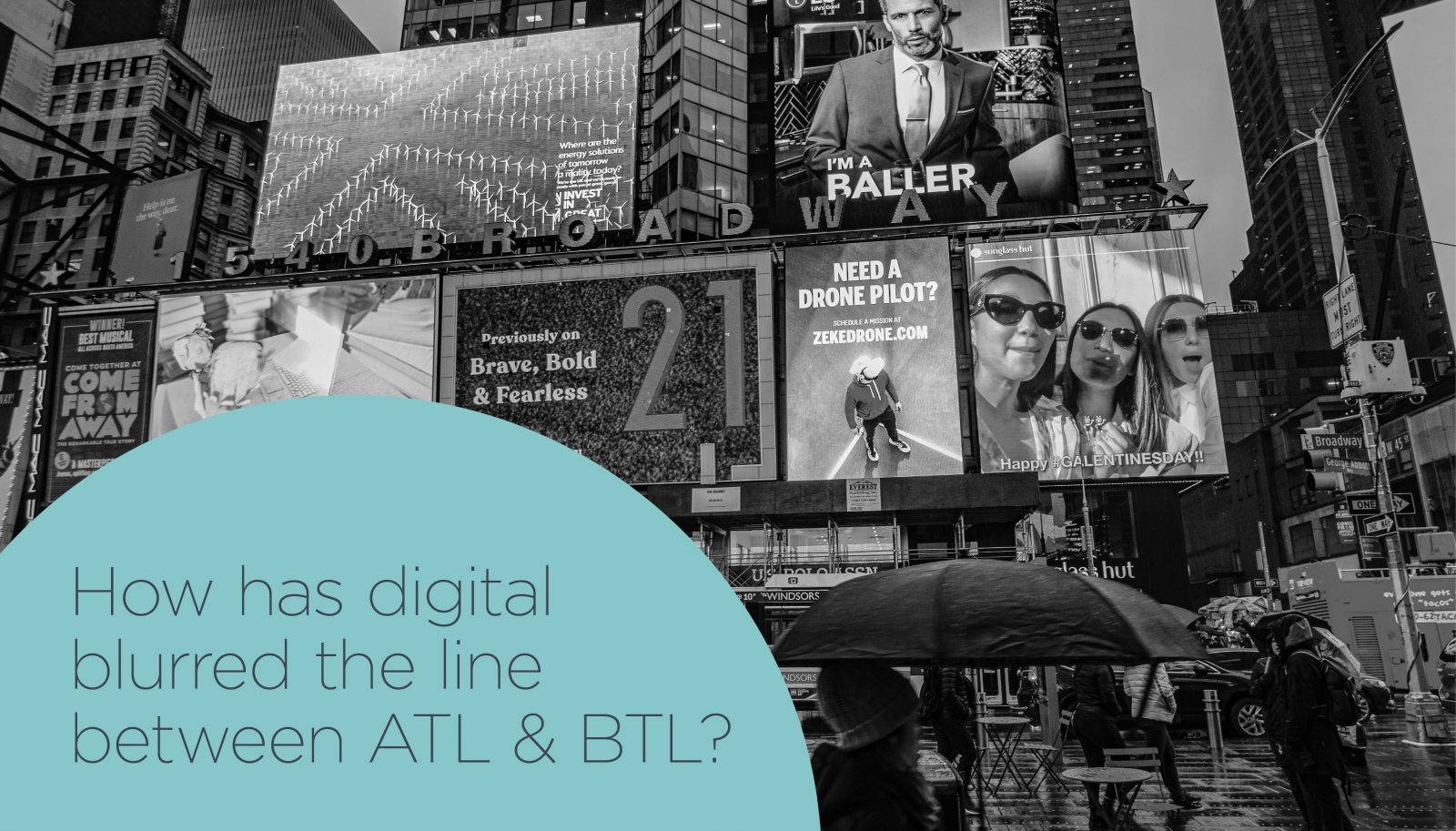The biggest advertising, marketing and creative agencies have been using the acronyms ATL (above the line) and BTL (below the line) for years (since 1954 to be exact). The acronyms differentiate between types of campaigns, however with the rise of digital, the line between the two has blurred.
What’s the difference between ATL and BTL advertising?
Below the line
BTL, or ‘below the line’ marketing campaigns and promotions involve direct, targeted campaigns to specific prospects. This includes PR campaigns, social media marketing, telemarketing, content, events, social media marketing, paid search and search engine ads. The objective here moves beyond brand awareness towards driving specific actions.
Best for: driving specific actions
Above the line
ATL, or ‘above the line advertising includes all forms of mass media marketing and communications. Think grandiose TV and cinema commercials, radio ads, glossy advertisements in magazines and newspapers and other forms of outside marketing including signage and billboards found at our big sporting events. Super Bowl ads are a perfect example of ATL marketing. They reach a huge audience but don’t necessarily ‘sell’ anything in particular. Much like the Super Bowl ads, ATL campaigns tend to be quite expensive.
Best for: increasing brand awareness.
The separation between the two began when large corporations started to distinguish between larger-scale campaigns (often produced by powerhouse ad agencies) and more focused and direct campaigns.
An easier way to conceptualise this is the ‘Mad Men’ agencies of old VS internal in-house marketing teams that you would expect to find in small to medium-sized organisations, working directly to contact their customer base via telemarketing, EDM, social media, and other promotional activities.
What makes a successful ATL or BTL campaign?
Although ATL campaigns tend to cost more, spending more doesn’t guarantee a high quality or effective campaign. The success is determined by the number of people reached and the brand awareness generated- and ultimately, whether or not the brand or organisation sees a subsequent increase in engagement and profit.
ATL campaigns can be hit or miss. Take for example the Toohey’s Extra Dry ad that followed an adventurous tongue in a house party as it went to retrieve a beer. Equally funny and grotesque, the ad was hugely successful. By contrast, Tourism Australia’s ‘Where the bloody hell are you’ campaign was unenthusiastically received, even being banned in Britain and Canada.
When it comes to BTL campaigns, research indicates that it’s easier to measure success, particularly for small-medium sized businesses. There are more marketing tactics available to use and, with more information available, it’s easier to adapt and optimise the campaign as needed. Organisations can evaluate the success of a BTL campaign using conversion rates, site visits, page views, social shares and most importantly, campaign attributed sales conversions.
How digital marketing has blurred the line between ATL and BTL
Digital marketing has challenged both approaches and is actually Through The Line (TTL).
Through The Line marketing takes an integrated approach ensuring both direct and larger reach mediums are utilised while retaining an ultimate focus on conversion.
A TTL campaign is strategically designed so that the overall message of the campaign leads and feeds into other marketing related activities. For instance, when an NFP has an activation outside a major commercial centre promoting a new cause, many of the passersby are already aware of the organisation and the campaign via other media channels. The impact of the campaign is intensified as the recognition of the cause/NFP is there and the brand reinforced.

